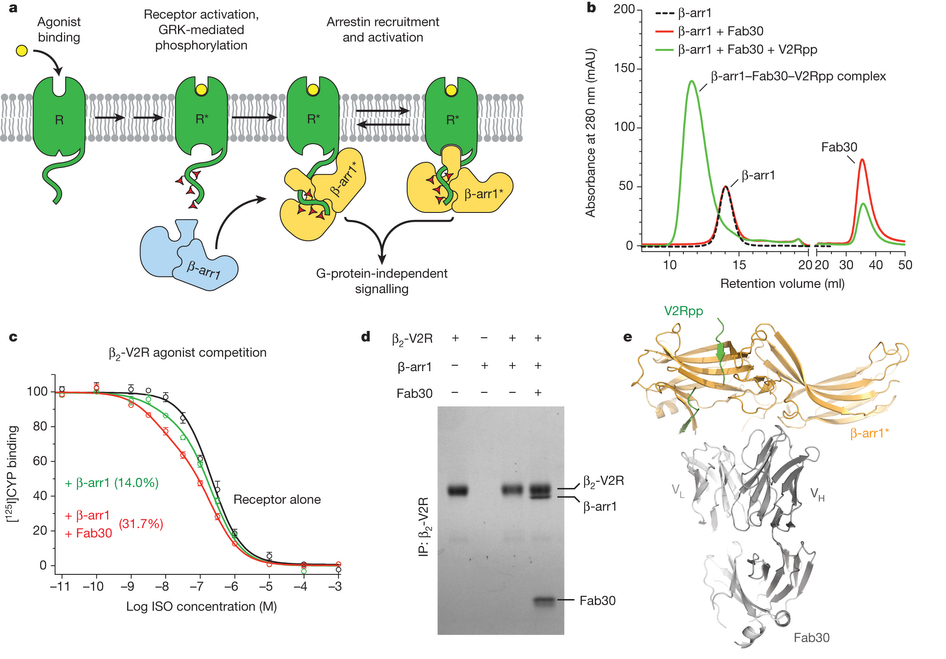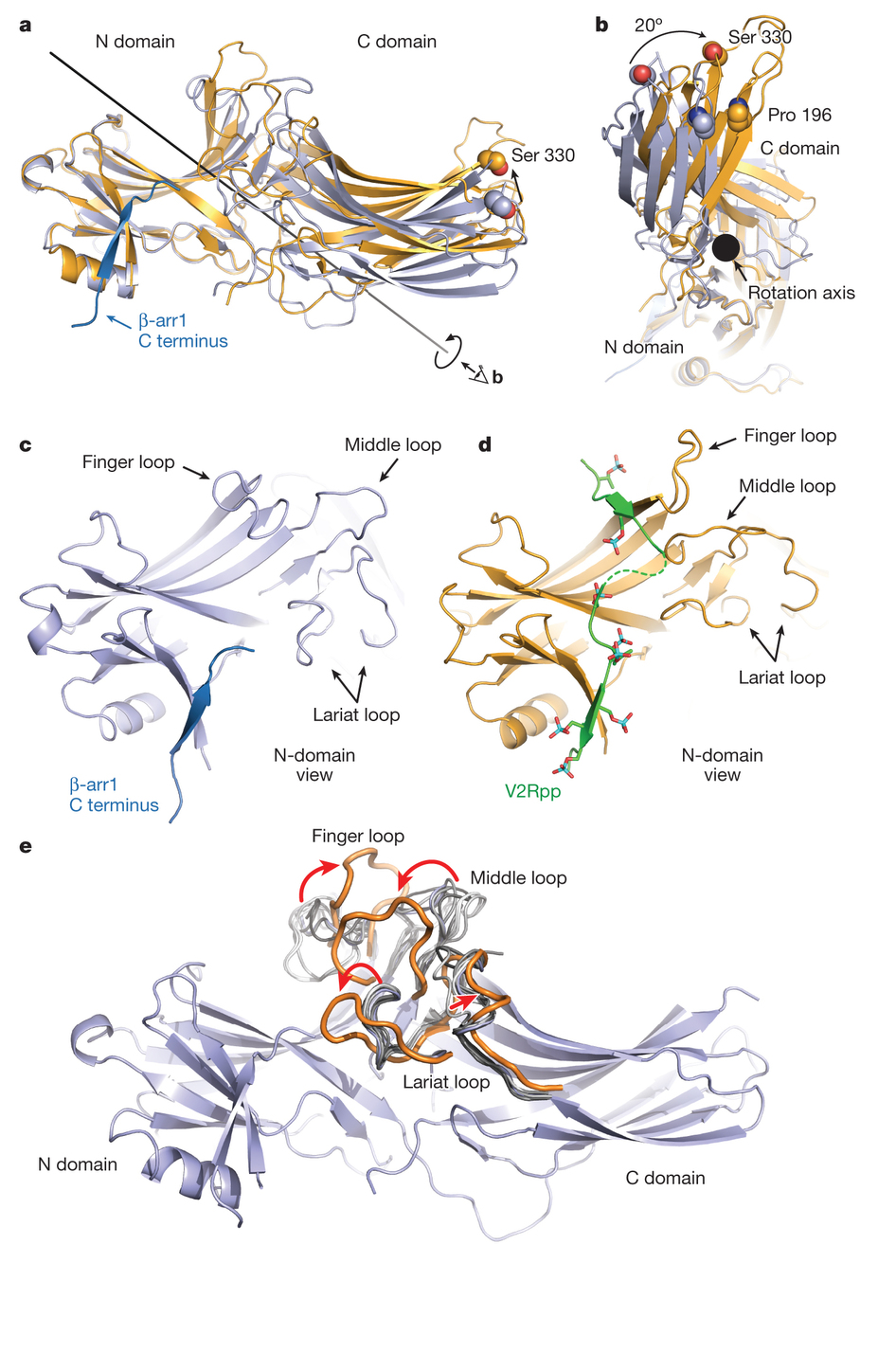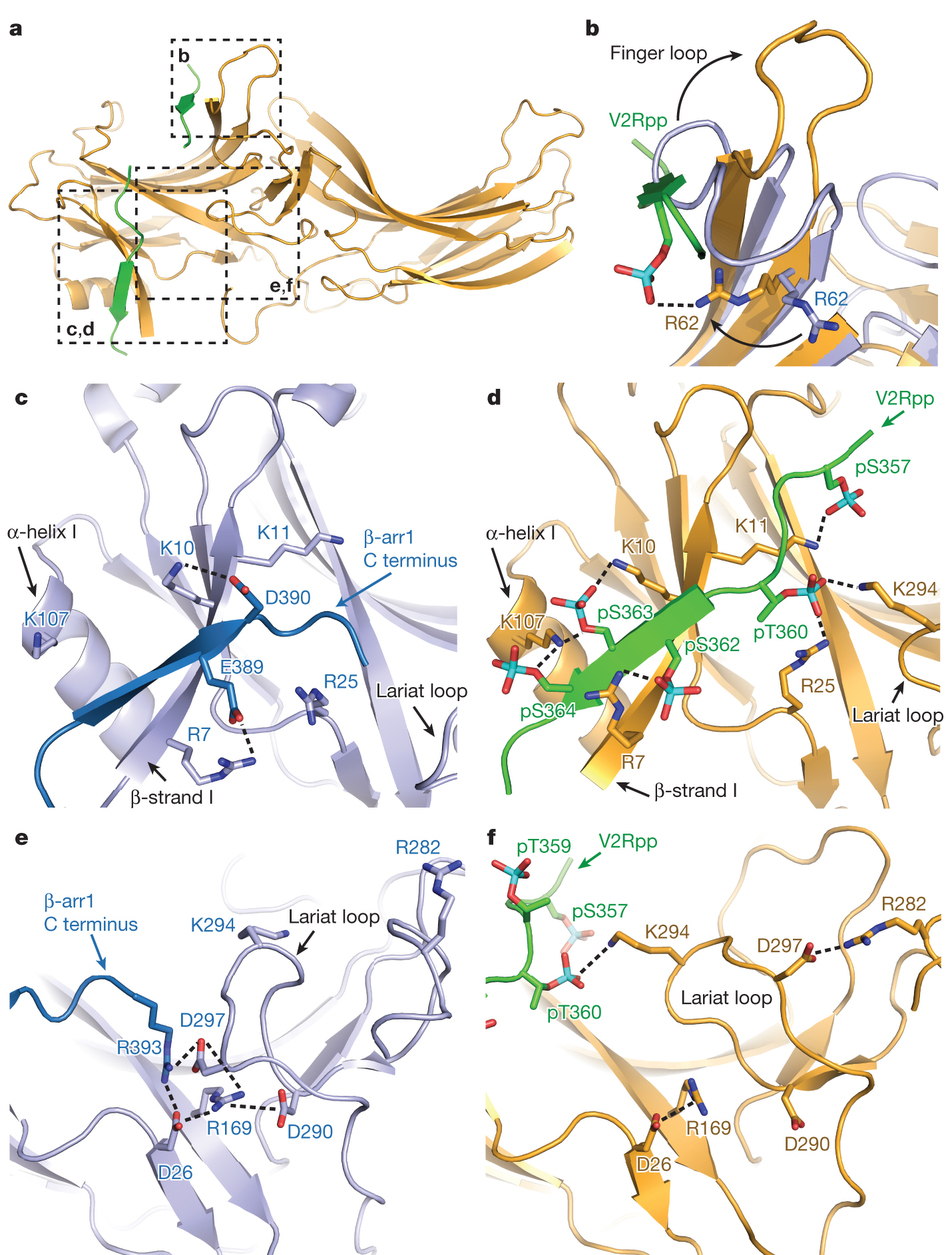Structure of active β-arrestin-1 bound to a G-protein-coupled receptor phosphopeptide
By Arun K. Shukla, Aashish Manglik, Andrew C. Kruse, Kunhong Xiao, Rosana I. Reis, Wei-Chou Tseng, Dean P. Staus, Daniel Hilger, Serdar Uysal, Li-Yin Huang, Marcin Paduch, Prachi Tripathi-Shukla, Akiko Koide, Shohei Koide, William I. Weis, Anthony A. Kossiakoff, Brian K. Kobilka & Robert J. Lefkowitz.
Published in Nature 497 (7447) on April 21, 2013: 137-41. Link to publication page. PMID: 23604254. PMCID: PMC3654799.
Core Facility: Synthetic Antigen Binder (SAB) Generation and Crystallography

Figure 1: Fab30 specifically recognizes and stabilizes an active state of β-arrestin-1. a, GPCRs are phosphorylated after activation, leading to the binding of arrestins. Interactions between the phosphorylated receptor and β-arrestin-1 lead to β-arrestin-1 activation and the subsequent blockade of G-protein signalling and initiation of β-arrestin-1 signalling pathways. b, Interaction between β-arrestin-1 and Fab30 requires the presence of V2Rpp in a size exclusion assay. c, The formation of a complex between a GPCR and β-arrestin allosterically leads to an enhanced affinity of agonist for the receptor, termed the ‘high agonist affinity state’. Therefore, the fraction of receptor in the high-agonist affinity state reflects the extent of complex formation between receptor and β-arrestin. In a radioligand competition binding assay using 125I-cyanopindolol as the probe and the agonist isoproterenol (Iso) as the competitor, β-arrestin-1 alone shifts a small portion (14%) of receptors into the high agonist affinity state. Fab30 significantly amplifies this effect (31%) (n = 3, P < 0.0001 in F test). d, In a pull-down assay, phosphorylated β2–V2R chimaera shows appreciable binding to β-arrestin-1 only in the presence of Fab30. e, Overall structure of the β-arrestin-1–V2Rpp–Fab30 complex.
Abstract
The functions of G-protein-coupled receptors (GPCRs) are primarily mediated and modulated by three families of proteins: the heterotrimeric G proteins, the G-protein-coupled receptor kinases (GRKs) and the arrestins. G proteins mediate activation of second-messenger-generating enzymes and other effectors, GRKs phosphorylate activated receptors, and arrestins subsequently bind phosphorylated receptors and cause receptor desensitization. Arrestins activated by interaction with phosphorylated receptors can also mediate G-protein-independent signalling by serving as adaptors to link receptors to numerous signalling pathways. Despite their central role in regulation and signalling of GPCRs, a structural understanding of β-arrestin activation and interaction with GPCRs is still lacking. Here we report the crystal structure of β-arrestin-1 (also called arrestin-2) in complex with a fully phosphorylated 29-amino-acid carboxy-terminal peptide derived from the human V2 vasopressin receptor (V2Rpp). This peptide has previously been shown to functionally and conformationally activate β-arrestin-1 (ref. 5). To capture this active conformation, we used a conformationally selective synthetic antibody fragment (Fab30) that recognizes the phosphopeptide-activated state of β-arrestin-1. The structure of the β-arrestin-1-V2Rpp-Fab30 complex shows marked conformational differences in β-arrestin-1 compared to its inactive conformation. These include rotation of the amino- and carboxy-terminal domains relative to each other, and a major reorientation of the ‘lariat loop’ implicated in maintaining the inactive state of β-arrestin-1. These results reveal, at high resolution, a receptor-interacting interface on β-arrestin, and they indicate a potentially general molecular mechanism for activation of these multifunctional signalling and regulatory proteins.




